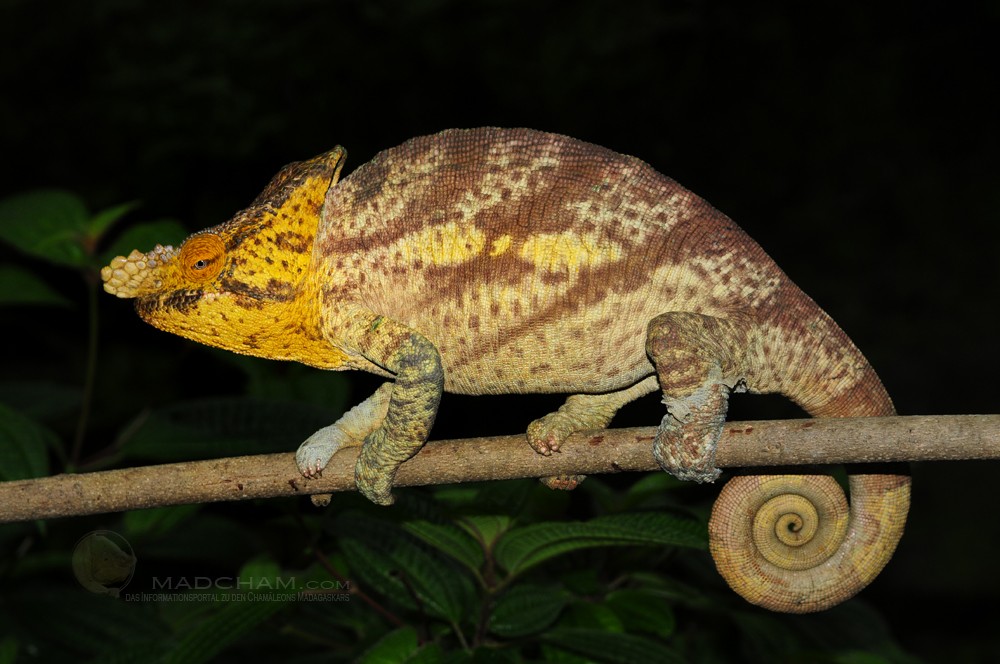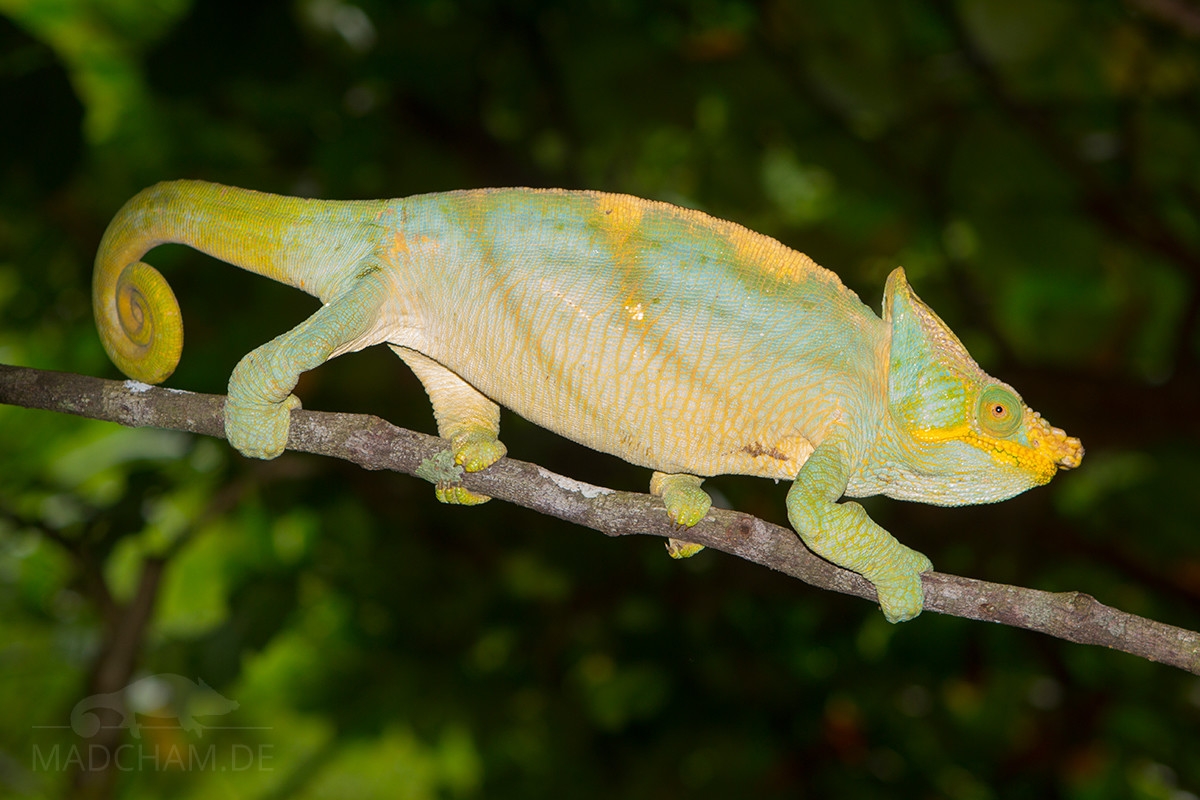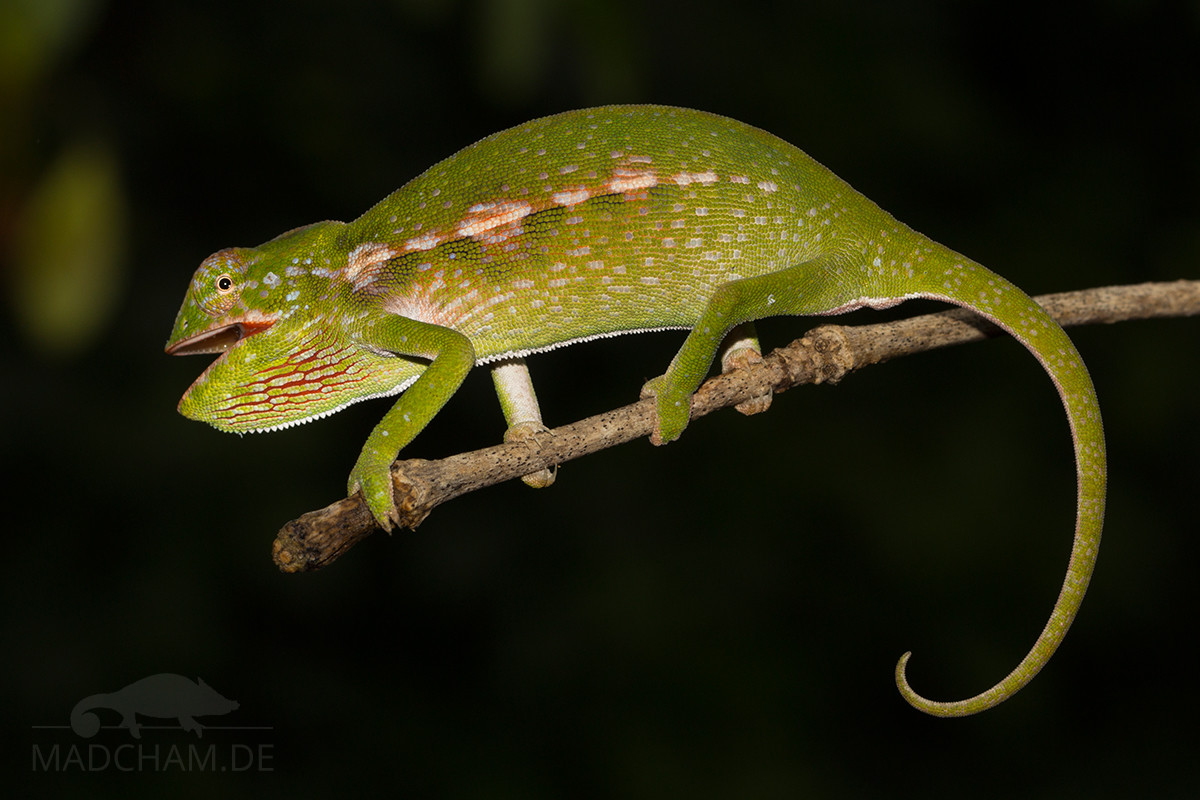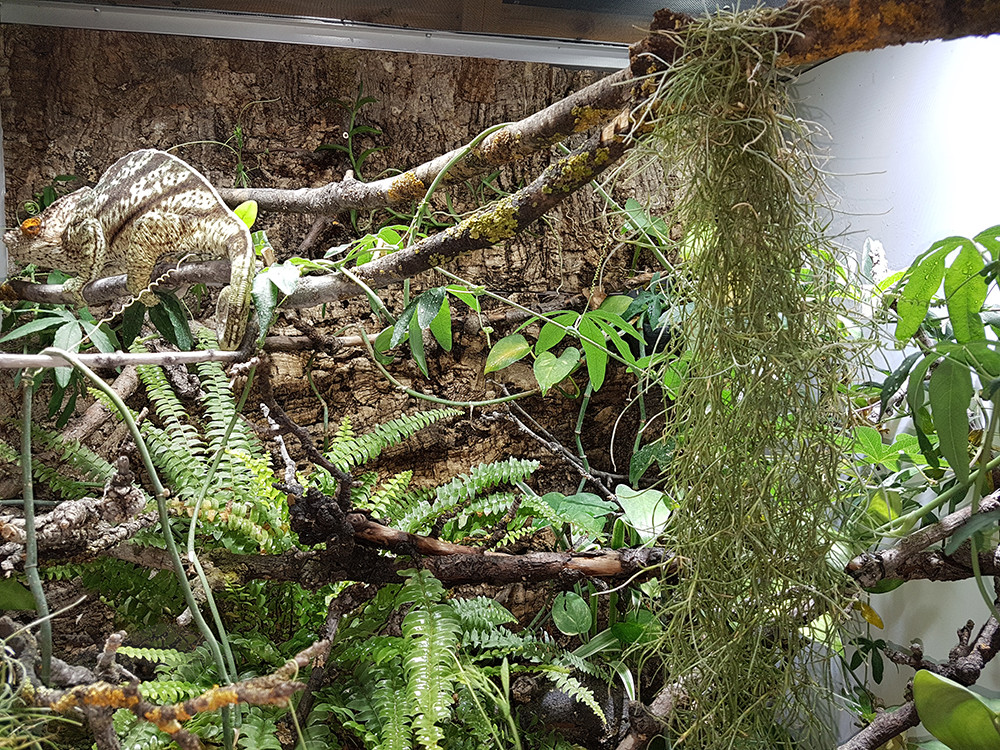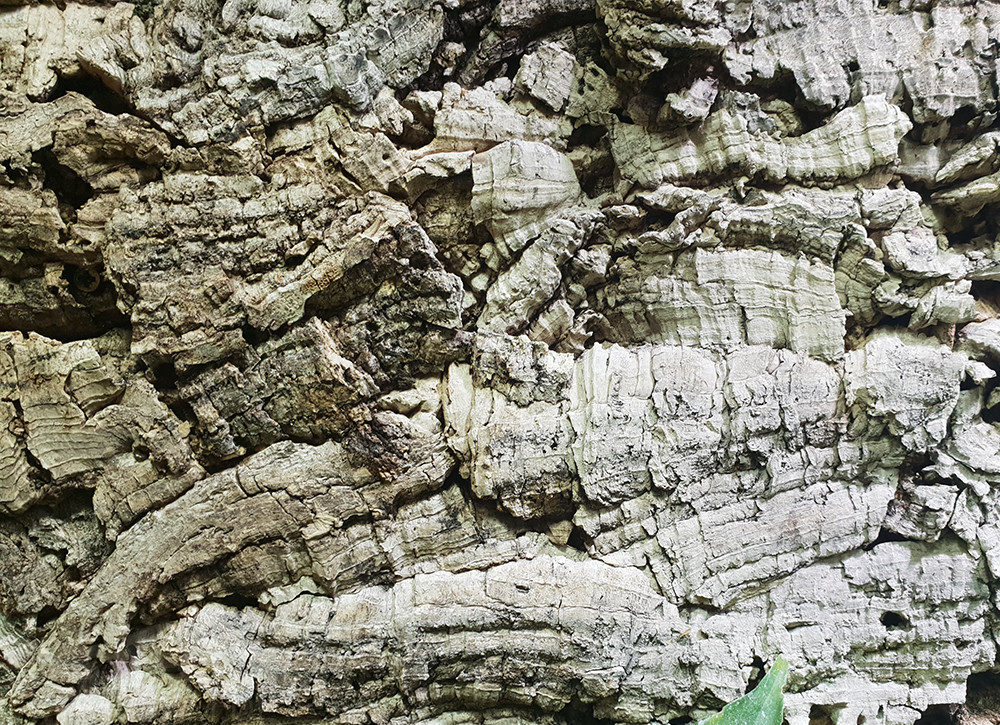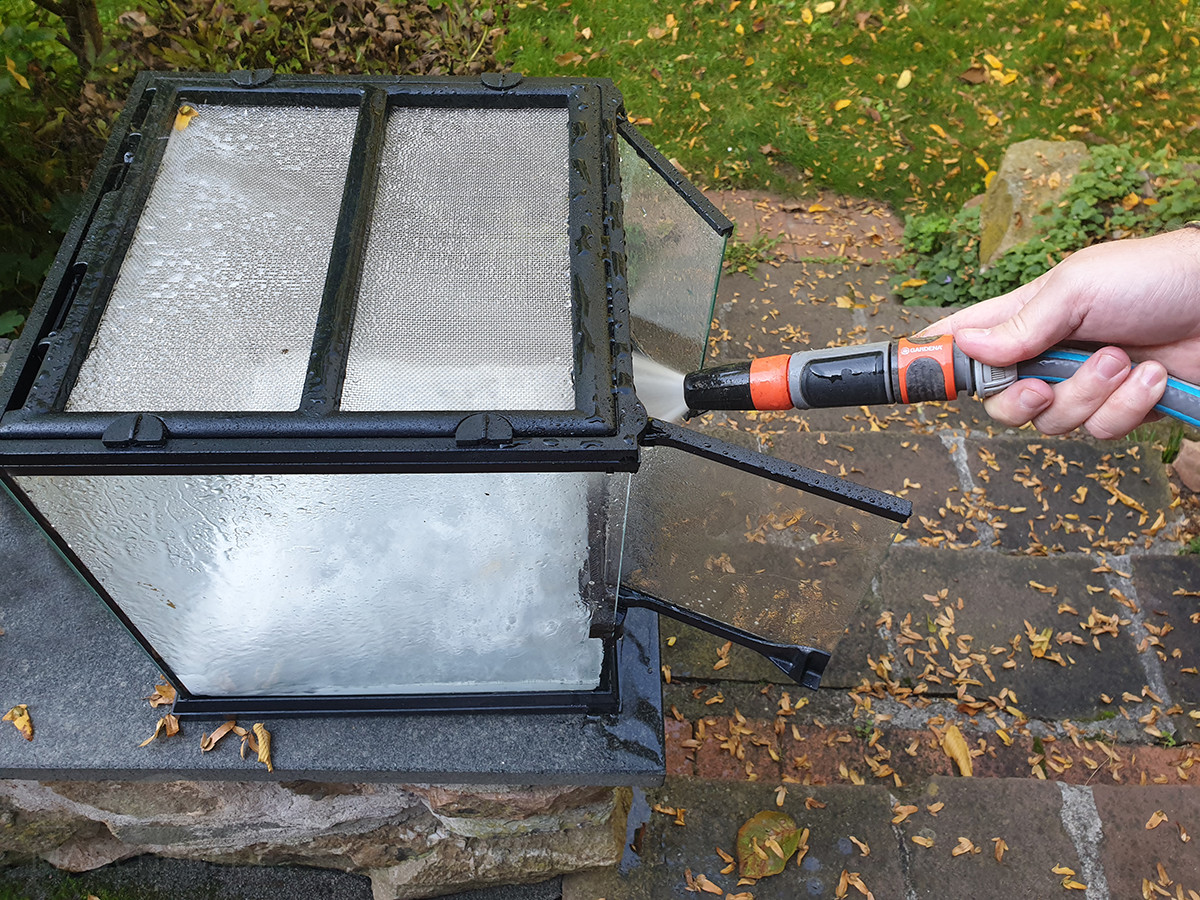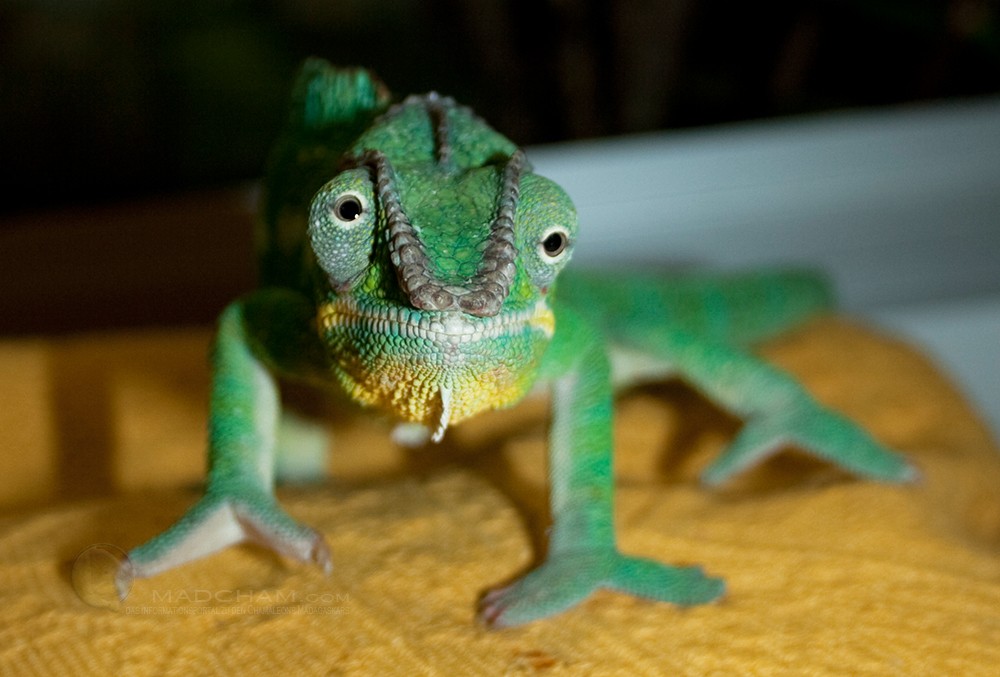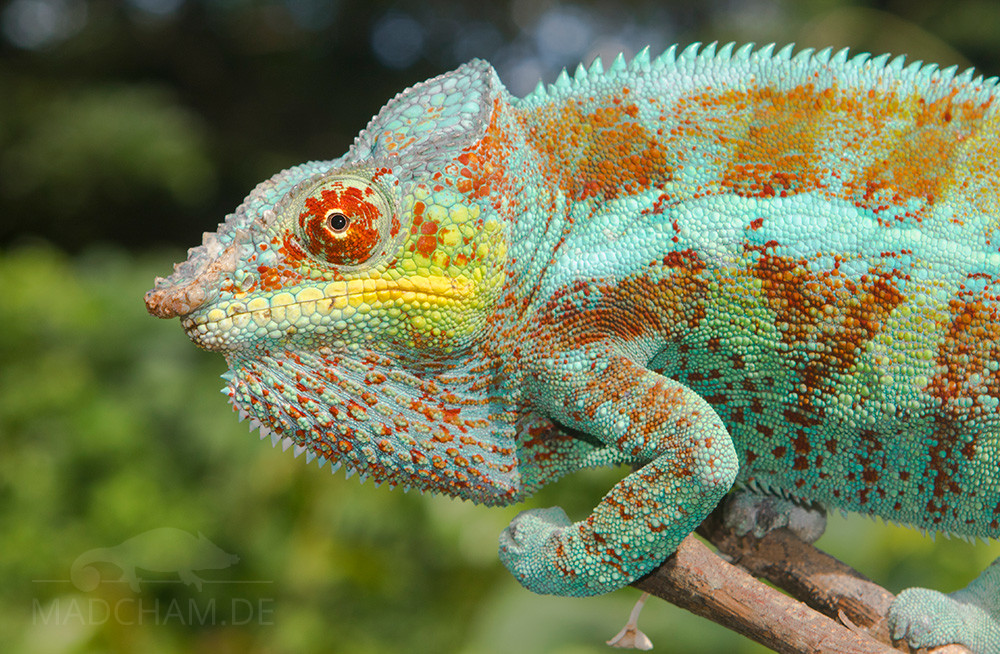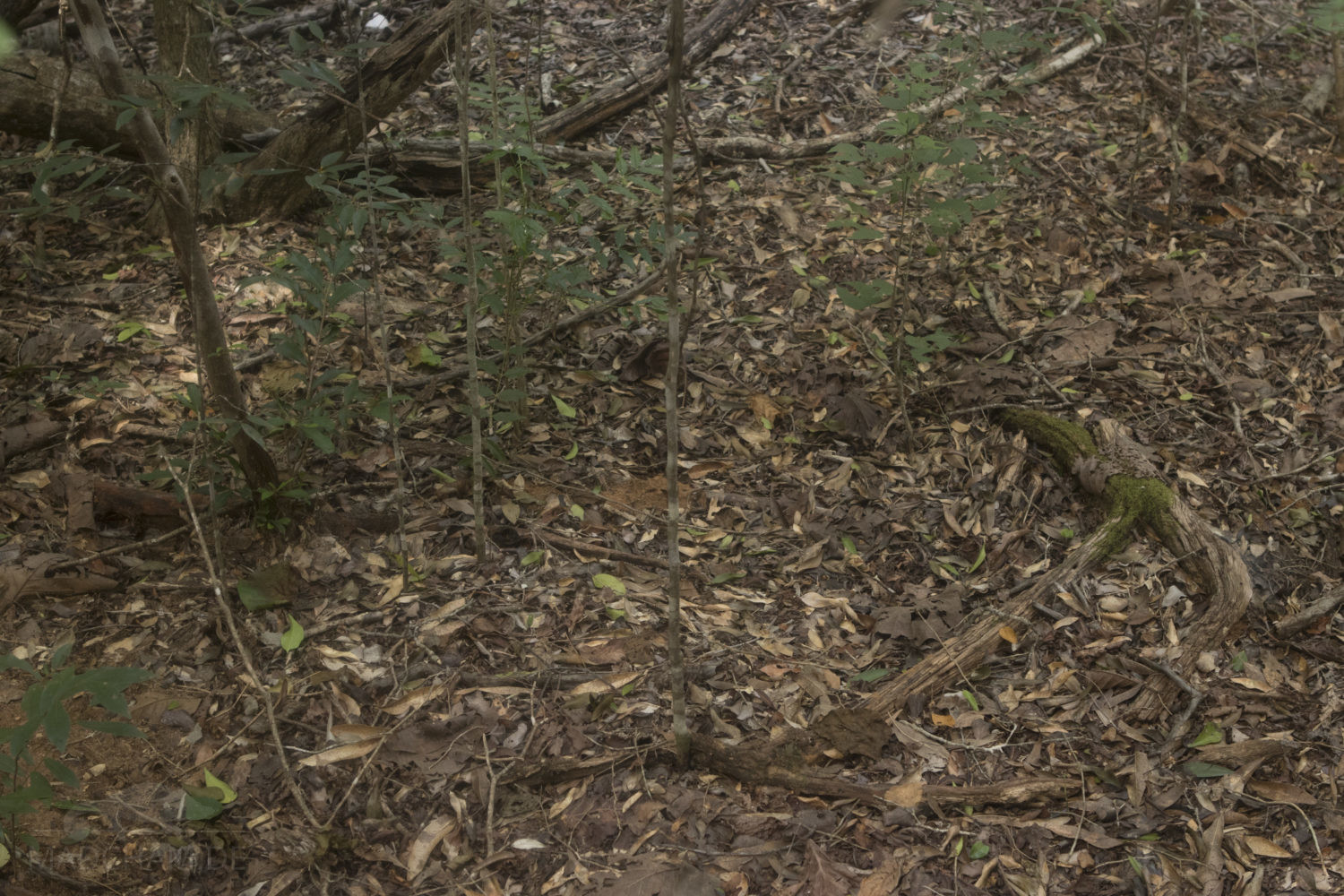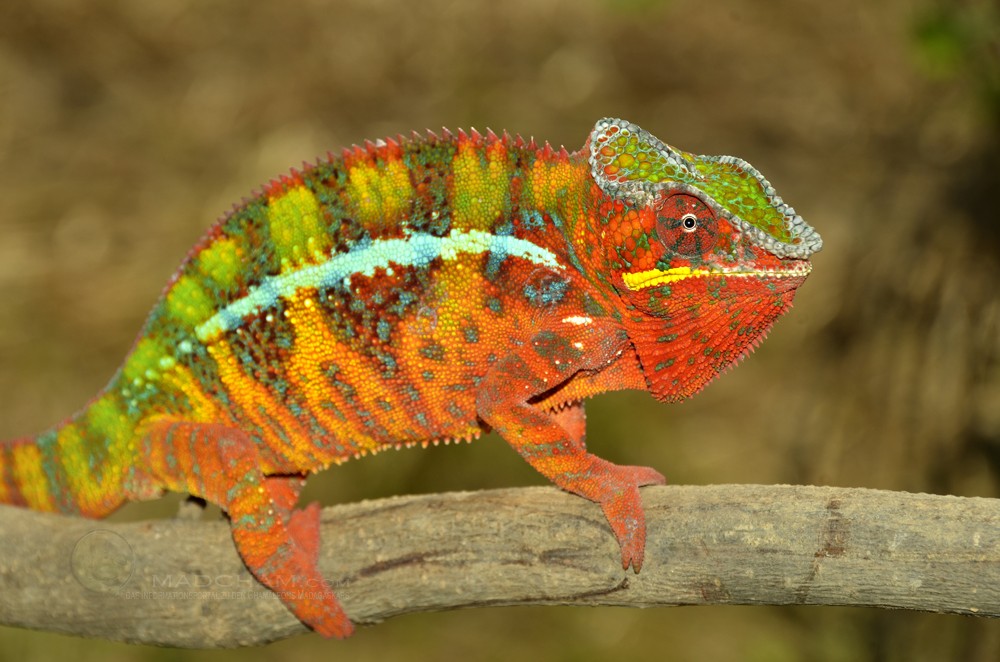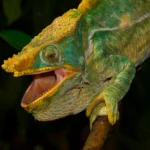Color variation “yellow giant”
Distribution: Vohimana is approximately 15 km away from Andasibe-Mantadia national park in eastern Madagascar, only about 160 km and few hours by car via RN2 away from the capital Antananarivo. Andasibe-Mantadia, earlier called Perinét,...
Color variation “yellow lip”
Distribution: Ranomafana national park is approximately 420 km south-east of the capital Antananarivo in Madagascar’s southern highlands. You need at least one day to get there via RN7. The village of the same name...
Furcifer major
First description: (Brygoo, 1971) Origin of the species name: The French zoologist Édouard-Raoul Brygoo described the species at the Institute Pasteur in Antananarivo, Madagascar. He considered it to be a subspecies of the carpet...
Climbing possibilities and decoration
Before a terrarium can be occupied by its new occupant, it needs suitable furnishings. In addition to living substrate, back wall, and living plants and needs a chameleon terrarium especially one thing: climbing opportunities....
Cleaning and disinfection
Everyone in the terrarium hobby has already experienced it: You painstakingly set up a beautiful terrarium, but do not take it so exactly with the quarantine and put the newly acquired chameleon in the...
“Free range” and chameleons inside the living room
Again and again, pictures pop off in the world wide web showing chameleons “free-roaming” inside the living room, optionally in kitchen, sleeping room or at the balcony, too. In most cases, the animals sit...
Bioactive substrate
Actually, it is quite simple with the soil: Here, too, it is best to orientate yourself on the natural habitat of the chameleons in Madagascar. This article mainly explains the bioactive substrate, its components...
Wild caught or captive bred?
If you want to buy a chameleon, you will need to decide sooner or later whether you like to have a captive bred (cb) individual or a wild caught (wc) chameleon. Generally, in our...

